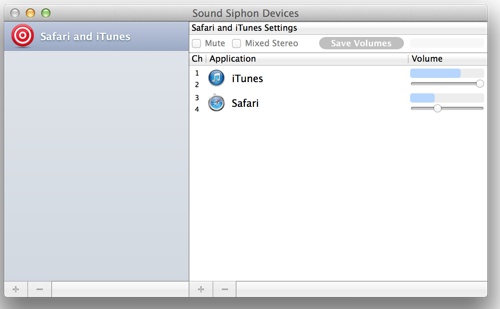
- #Sound siphon in quicktime how to
- #Sound siphon in quicktime install
- #Sound siphon in quicktime pro
- #Sound siphon in quicktime software
Note that I have no affilation and I gladly purchased a license. This will ensure the longevity of the application and continued development. My hope is that you consider purchasing a $29.99 license. And the developer states that many useful enhancements are in the works. Note that Sound Siphon is very diverse in terms of features. It enables you to send audio from one application to another where it can be processed, streamed, or recorded.”
#Sound siphon in quicktime software
Sound Siphon by Static Z Software “… makes your Mac’s Audio Output available as an Audio Input Device. And so I looked around for a suitable up to date (and actively developed) replacement for SoundFlower.
#Sound siphon in quicktime install
However, I had no plans to install the now unsupported SoundFlower on my production MacPro for further testing. SoundFlower, along with the iMac’s Line Input were wrapped into a single Aggregate Device, and then designated in Logic as the default Input. I originally created this workflow using SoundFlower that was installed on my secondary iMac and carried over form previous versions of OSX. We also need a software utility that supports routing of the Skype Output to an Input in Logic. By wrapping supported “Subdevices” into a single Aggregate, you effectivly create a sort of cumulative Input Device that can be designated in Logic as the default. Aggregate devices appear in the OSX System Preferences/Sound I/O options for system wide use. The foundation of this setup is based on a user created Aggregate Audio Device. You can also implement similar workflows by using two inexpensive USB audio interfaces connected to a single machine.Ĭonsidering the resourcefulness of today’s modern day Macs, I’m confident the following workflow will be successful freeing the user from complexities and added costs. In this case you would also need to use a mixer to set up a proper mix-minus.
#Sound siphon in quicktime pro
Of course the objectives noted above are easily attainable using two independent machines, with the recording box running Logic Pro X and the Skype machine handling the connection. [– Real time Processing and Recording of all instances. [– One processed split-stereo mixdown of the session with the Host and Guest residing on discrete (L+R) channels. [– Two independent mono Host/Participant stems with no processing. If you’ve already installed VLC, you can re-run the installer and ensure you select this option.Studio Host and Skype participant to be recorded inside Logic Pro X on a single machine (single pass) with no additional hardware other than a Mic Input Device. Install VLC and ensure you select the “ActiveX plugin” (for Internet Explorer) and/or “Mozilla plugin” (for Mozilla Firefox) options at install time. Internet Explorer will continue supporting old ActiveX plug-ins, but Microsoft Edge doesn’t. Firefox still includes support for NPAPI plug-ins like this, but will be removing it at the end of 2016. However, this is an old plug-in and isn’t supported by modern web browsers like Google Chrome. VLC offers a browser plug-in, which you can choose to install.
#Sound siphon in quicktime how to
RELATED: How to Use Java, Silverlight, and Other Plugins in Modern Browsersįor ancient web pages that require QuickTime, you still have one alternative. Videos will just play using your browser’s integrated HTML5 video support.

Most modern websites use either HTML5 video or Adobe Flash, with a few holdouts perhaps stuck on Microsoft’s Silverlight.Īpple’s Trailers website once required QuickTime, but it no longer does. You should encounter QuickTime content on the web only rarely, and only on old sites that need to be updated. The vast majority of websites have now dropped Apple’s QuickTime plug-in, just as they’ve dropped MIcrosoft’s Windows Media Player plug-in and the RealPlayer plug-in.


 0 kommentar(er)
0 kommentar(er)
